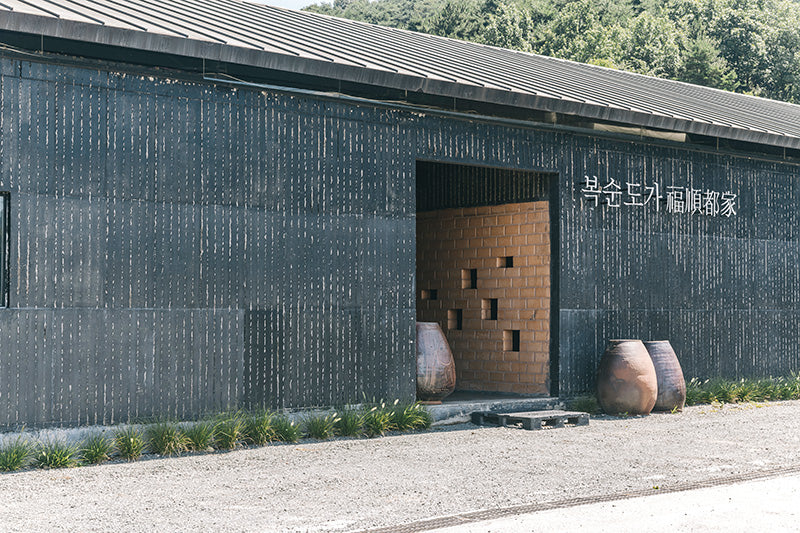Korea’s rich heritage of brewing traditional alcoholic beverages, known as "sool," dates back centuries. Despite the historical importance, many traditional breweries faced challenges in the modern era due to industrialization and the global rise of mass-produced liquors. In response to this, the Korean government initiated a project in 2013 called the **Visitable Breweries** (or “찾아가는 양조장”) to support local breweries, revitalize interest in traditional alcohol, and promote cultural tourism. How many breweries are producing alcohol in our country? As of April 25, 2022, there are 1,335 breweries nationwide. This number includes all breweries that produce makgeolli and yakju, in addition to beer and soju that we easily come across around us. Excluding actual beer (including craft beer) and soju, the number of breweries that we call our alcohol (makgeolli, yakju, etc.) is estimated to be around 1,200. In terms of market share, beer accounted for 39% and diluted soju 42%, accounting for 81% of all alcohol. In the end, if you exclude the three major beer companies, small breweries, and 11 famous local soju companies, 18% of the liquor market is made up of more than 1,200 domestic breweries.
The Beginnings of the Visitable Breweries Project
Excluding the large city of Seoul and a few other cities, there are about 1,200 breweries, which is more than you might think, producing a variety of alcohol that we drink. As such, there are probably not many consumers who have visited even one of the many breweries around. Even if you have no experience visiting a domestic brewery, you can easily see brewery tours abroad. If you go to Japan, which is famous for sake, or wine producing countries like France, the United States, and Italy, or Germany for beer, or England for whiskey, many tour packages include a distillery tour. In these countries, brewery tours have been consumed as a tourist product for a long time.
Why are there no brewery tours in Korea that are already established overseas? Until now, our country's breweries were focused on producing and selling alcohol. In the past, especially for makgeolli, alcohol production operations often took place early in the morning for delivery or the factories were not shown to outsiders due to crackdowns, so it was not thought of commercializing the brewery as a tourist product.
Revival of Traditional Sool
Historically, traditional Korean alcohol, or **sool**, played an integral role in Korean life, used in everything from ceremonial rituals to social gatherings. However, with the advent of mass production and the increasing influence of Western liquors, traditional sool faced declining interest. Many small, family-owned breweries struggled to survive.
The Visitable Breweries initiative aimed to reverse this trend. By integrating brewing with tourism, it turned these breweries into cultural and educational hubs where visitors could learn about the meticulous process behind traditional brewing, the history of each beverage, and even local folklore associated with the drinks. I list down all the breweries at Google Map. You can download and share this link for your own use and reference to public.
Successes of the Project
The project saw notable early successes. By 2020, dozens of breweries had joined the initiative, reporting a significant increase in revenue and tourist numbers. Visitors, both domestic and international, flocked to these breweries, drawn not only by the chance to sample unique beverages but also by the opportunity to participate in an authentic cultural experience.
Some of the most successful breweries, such as 'Baesangmyun Brewery' and 'Solsongju Brewery', became household names among sool enthusiasts. The increased visibility of these breweries helped them diversify their product lines and even expand their distribution, both domestically and internationally.
This project played a key role in introducing Korean traditional alcoholic beverages to global audiences, increasing their visibility on the international stage, particularly during the Korean Wave (Hallyu) that brought attention to various aspects of Korean culture, including its food and drinks.
The Tourism Experience: What to Expect at a Visitable Brewery
A visit to a traditional Korean brewery is more than just about tasting alcohol; it’s an immersion into a rich cultural and artisanal tradition. Many breweries offer guided tours that walk visitors through the brewing process, from selecting the grains (such as rice or barley) to fermentation and bottling.
Tourists are often invited to try their hand at brewing their own makgeolli or soju, learning firsthand how labor-intensive and delicate the brewing process is. These activities are designed to educate visitors about the traditional techniques that distinguish sool from industrialized liquors.
The scenic rural settings of many breweries add to the charm. Nestled in quiet, picturesque countryside areas, visitable breweries provide a peaceful retreat, allowing visitors to enjoy both the landscape and the craftsmanship of Korean alcohol.
After the tour, many breweries offer tastings, where visitors can sample a variety of alcoholic beverages, often paired with local snacks like **jeon** (Korean pancakes) or other regional delicacies. The tasting experience often leaves a lasting impression, inspiring many visitors to take home bottles of their favorite brews.
The Need for Revitalization
While the Visitable Breweries project has been successful in its goals, by the mid-2020s, it became clear that the program needed a boost to maintain its momentum. One of the key challenges is that many breweries are geographically isolated, making it difficult for casual tourists to visit them without extensive planning or access to private transportation. The project should benefit from a more innovative approach to attract new visitors such as breweries could collaborate to create 'themed tourism routes', allowing tourists to visit multiple breweries in a single trip, similar to wine-tasting routes in countries like France or the United States.
Another suggestion is for breweries to invest in stronger **branding** and **marketing campaigns**. While some breweries have successfully cultivated a strong brand identity, others struggle to differentiate themselves in an increasingly competitive market. Developing clear, cohesive branding and offering bundled products could help attract more visitors and make traditional sool more widely recognized both domestically and abroad.
However, as the project moves into its second decade, it faces new challenges that require innovative solutions. Strengthening branding, fostering collaboration, and continuing government support will be essential for the future growth of these breweries. With the right strategies, visitable breweries in Korea have the potential to become a key attraction in the global cultural tourism landscape, offering visitors a unique window into Korea’s artisanal craftsmanship and heritage.

